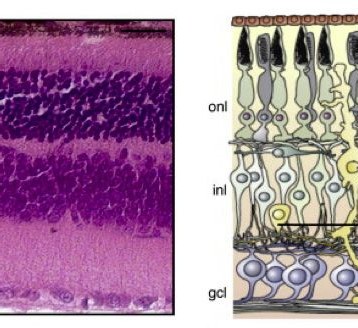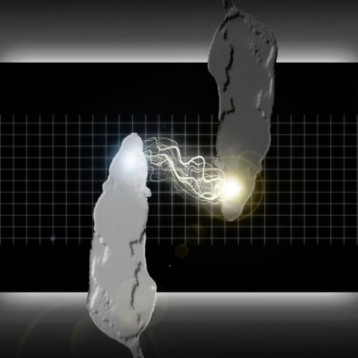
electron micrograph of herpes simplex virus type 1 infecting a cell (Credit: Carnegie Mellon)
Researchers from Carnegie Mellon University measured, for the first time, the pressure inside human herpes simplex virus 1 proving a long held theory that herpes viruses were packaged so full of genetic material that they built up high internal pressure allowing them to shoot viral DNA into a host cell during infection. According to the researchers this new discovery opens a door for developing new drugs and antiviral therapies to fight the herpes virus which effects almost 60% of U.S. citizens and currently has no cure.
Herpes simplex is possibly one of the most common human infecting viruses. With worldwide infection rates of HSV-1 and HSV-2 viruses estimated at between 65% and 90% of the global population it has reached epidemic proportions. Maybe the main reason why Herpes isn’t getting the attention it deserves is the fact that many people who are infected are described as asymptomatic or basically individuals who show no symptoms. However these people are still infections and can transmit the HSV-1/ HSV-2 virus to new hosts which may or may not develop symptoms. Herpes is considered contagious and it can be sexually transmitted, including contact with saliva or via contact with an infected area of the skin during re-activations of the virus.
Professor
Alex Evilevitch from the Carnegie Mellon University and his team recently published their findings regarding the way the herpes virus injects genetic material into healthy cells on the
Journal of the American Chemical Society. According to Evilevitch: “Current antiviral medications are highly specialized. They target molecules essential to the replication cycle of specific viruses, so each medication is designed to treat only one type of viral infection. Additionally, since viruses mutate over time, they can become less susceptible to targeted medications. But designing drugs aimed at stopping a fundamental mechanism of viral infection, in this case the tightly packed genome that causes such high internal pressure, could yield new classes of broad-based, mutation-resistant antiviral treatments”
–
The HSV-1 virus contains double-stranded DNA that is 400 times longer than the radius of the virus itself. This creates enormous pressure which is the way the HSV-1 infects the cell nucleus after entering the cell itself. For years scientists hypothesized that a high internal pressure inside viruses like HSV-1 enabled them to shoot DNA into the host cell’s nucleus. However it was impossible to measure HSV-1’s internal pressure until the recent experiment by Evilevitch and his team.
–
Interestingly, according to Evilevitch – The newly found mechanism of pressurized infection discovered on the HSV-1 virus is also said to be applicable to any of the eight known Herpes viruses that cause disease in humans, including Varicella zoster virus (which causes chickenpox in children), the shingles in adults, as well as the Epstein-Barr virus (which causes mononucleosis and is associated with several types of cancer, such as Hodgkin’s lymphoma). We can now hope that Evilevitch’s research will indeed be a first important step on the way to a new type of broad antiviral therapies.
–
More information on professor Evilevitch reaserch can be found on the Carnegie Mellon University
website.










